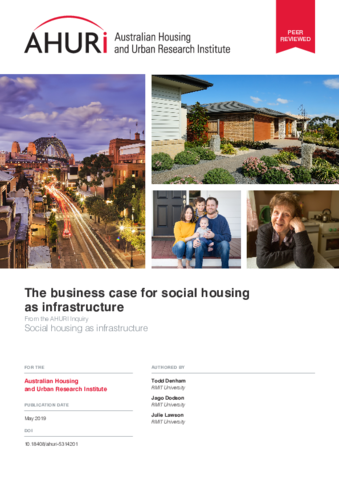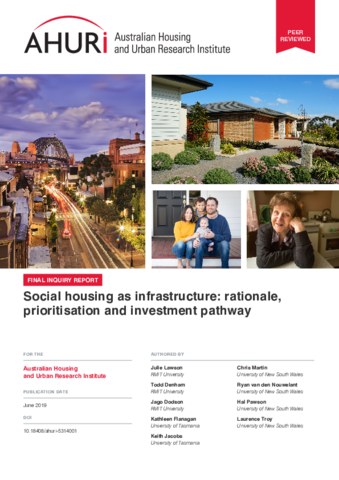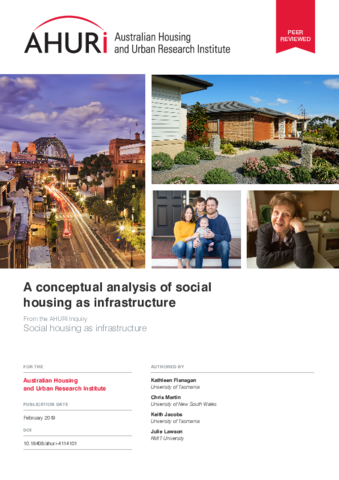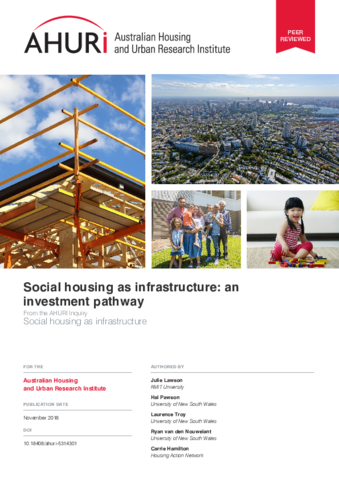This research informs the development of an investment pathway from the perspective of needs-based social infrastructure.
Demographic modelling quantifies the current need for social housing across Australia over the next 20 years. Multicriteria evaluation and financial modelling compares five investment scenarios involving a range of debt, efficient financing and capital grant strategies and assesses their relative cost to government.
The costs to governments are substantially reduced when public equity in the form of a capital grant is included in the investment mix and debt raised in the most efficient manner. The most cost-effective scenario combines an up-front capital grant with finance raised from the National Housing Finance Investment Corporation bond aggregator. The Government would pay an average annual subsidy of $9.0 billion over 20 years, which is less than the $11.8 billion annual subsidy required through private debt coupled with an operating subsidy. Over the lifetime cost of the first year of house building this represents a A$1.6 billion or 24% saving to the public purse.
While governments tend to favour “financial innovation” options that push costs into the future, capital grant funding is the rational investment pathway to follow. This model produces tangible assets which in turn can deliver key societal objectives— economic productivity, social wellbeing and environmental sustainability—and, where private financing is modestly used, does not rely on tenant access to CRA.





